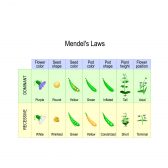Definition
noun, plural: caeca
(anatomy) A blind pouch-like commencement of the colon in the right lower quadrant of the abdomen at the end of the small intestine
Supplement
The caecum refers to the large blind pouch at the beginning of the large intestine. It is found in between the ileum and the colon. The ileocecal valve separates the ileum from the caecum whereas the cecocolic junction separates the ceacum from the colon. The caecum receives chyme from the ileum. The appendix is a diverticulum that extends off the caecum.
In humans, the caecum serves only as a blind pouch of the large intestine. The carnivores have a relatively smaller caecum compared with the herbivores. This is probably due to the nature of their diet. Animals that feed mainly on meat tend to have a smaller caecum whereas herbivores that feed on plants tend to have larger caecum. It could be because in herbivores the caecum is involved in storing food and it is from where bacteria can act on the cellulose of the ingested plant material. As for other animals such as reptiles, the caecum arises from the dorsal of the large intestine. In birds, the caecum occurs as paired pouches. Amphibians do not have caecum. Certain mammalian species also lack caecum, such as raccoons, red panda, and bears.
Word origin: Latin caecum (“blind gut”), Ancient Greek tuphlòn (énteron)
Variant(s):
- cecum
Also called:
See also:
- Large intestine
Related term(s):







